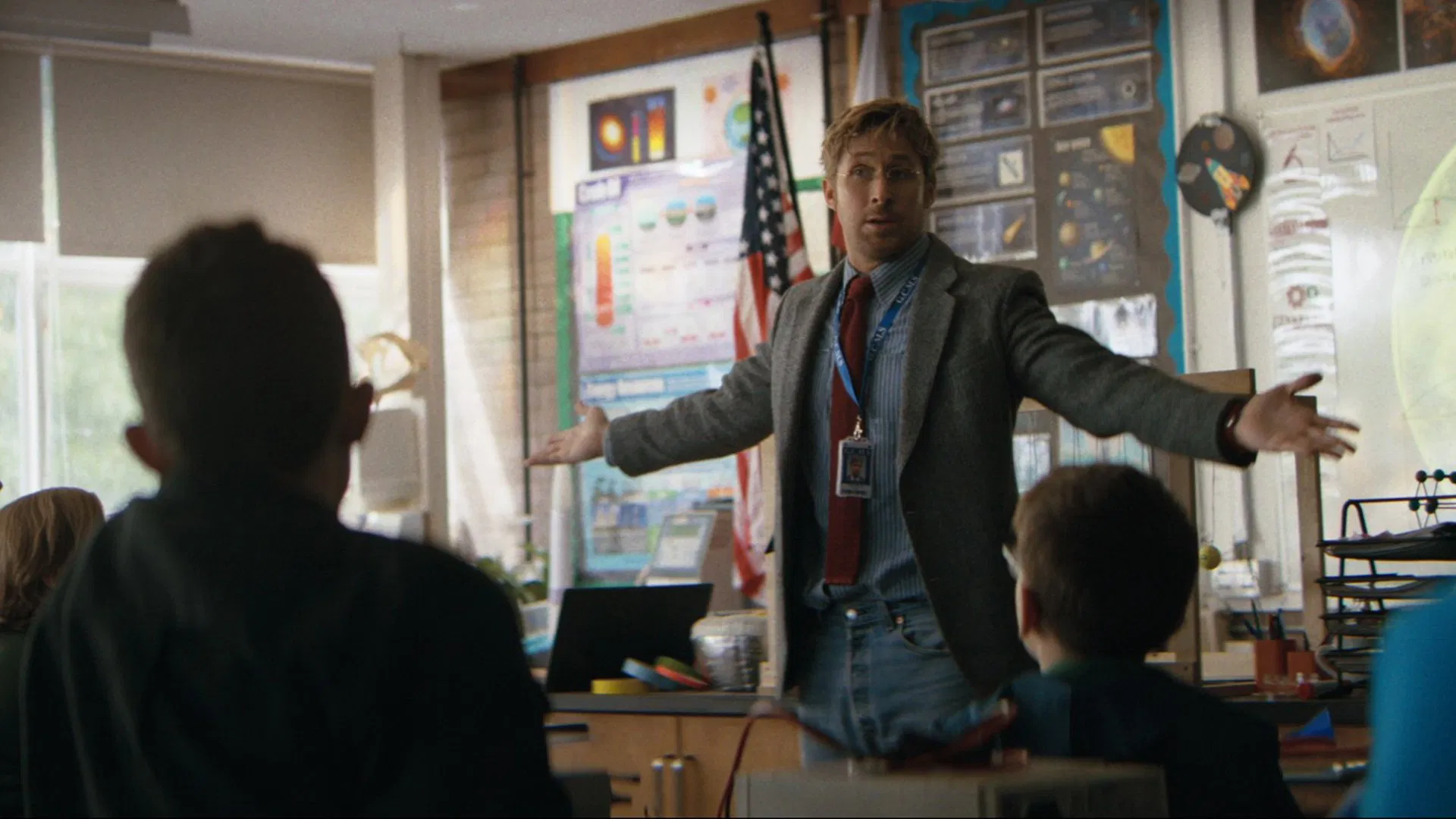I remember laughing hysterically while reading Project Hail Mary by Andy Weir — I hadn’t enjoyed a novel this much in a very long time.
As a spectroscopist, I couldn’t have asked for a better mix: optics, chemistry, and science fiction all tangled together. But when I finished it, my first thought was, too bad: there’s way too much hard science in here, no way this book becomes a big hit.
A couple of years later, the book resurfaces — this time as a movie, starring Ryan Gosling. The trailer drops, and suddenly everybody’s talking about it — praising the book. Among all the comments, one keeps popping up everywhere:
I hope they don’t mess this movie up.
This is when I realized that I was completely wrong about my prediction earlier. This wasn’t just a “hit.” It was something even bigger.
How did Andy Weir cram so much hard science into a novel and still make it a story that everybody seems to love?
Table of Contents
The Strange Cult of Project Hail Mary
Project Hail Mary came out on May 4, 2021. In just four short years, it’s gone from another sci-fi release to a phenomenon — a book loved by all ages. James Wallace Harris, in his seventies, writes that he finished the audiobook with watery eyes and a runny nose.
Andy Weir’s latest book, Project Hail Mary, left my eyes watery and my nose runny while listening to the last chapter on audio. I loved it. Is that the life I wished I was living? At 70, I know it’s an absurd fantasy, and I should answer that question with no. But when I was a teenager, I would have said yes with great enthusiasm.
On the other end, Ain, a 10th grader, writes that the story was “amazing,” praising how the book lays out science in an interesting way.
This book is amazing and was an exciting read. I liked the characterization. Grace’s perspective helps the reader understand the complex scientific concepts introduced and adds humor to the narration. The author did a great job with foreshadowing and pacing to create a suspenseful, interesting story. Overall, the story is well-written, with the aspects of the book well-connected.
Those two voices couldn’t be further apart in age — and yet they both walked away saying the same thing: they loved it.
Everybody else loved it too. On Goodreads, about 62% of readers gave Project Hail Mary a 5-star rating. Another 27% gave it 4 stars. That’s almost 90% of readers putting it at the very top of the scale.
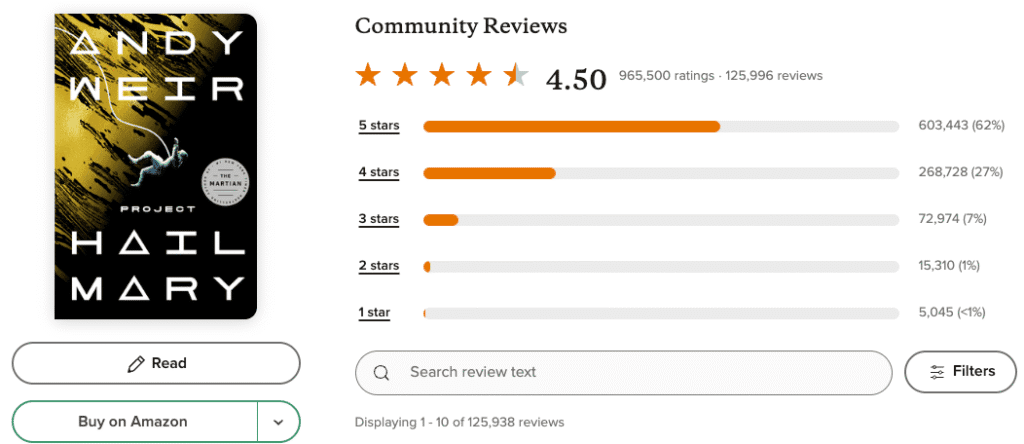
Most books, even successful ones, don’t have this kind of appeal. Their reviews spread out more evenly across 3s, 4s, and 5s. For comparison, here are the statistics for the top-rated novel Dune: around 52% 5-stars and 30% 4-stars.
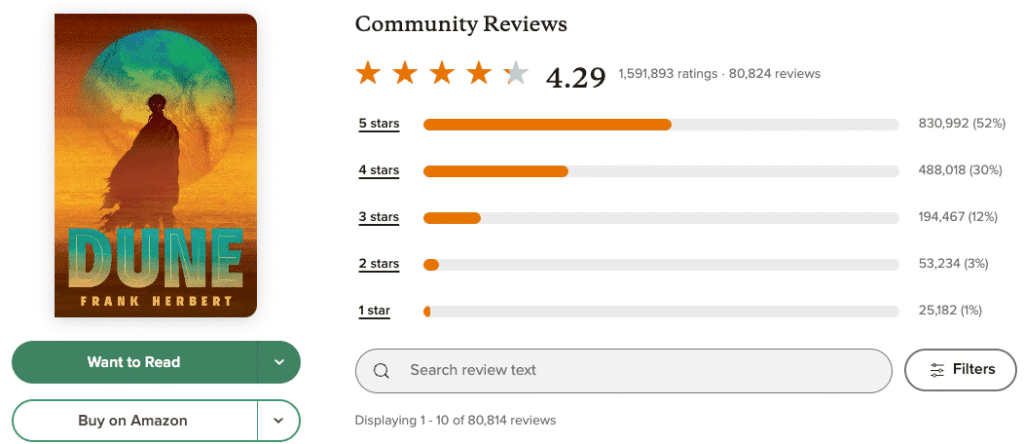
Still massively beloved, but not as top-heavy. For a book published only in 2021 to be matching — and in some ways surpassing — a classic like Dune shows a strange cult like following of this book.
How, with all the hard science, did Andy Weir find a way to make one of the most loved books?
Curiosity: A space storyline is miles better than the Earth one
Let’s say I’m on Earth and in a centrifuge. That would mean the centrifuge provides some of the force, with the rest being supplied by Earth. According to my math (and yes, I showed all my work!), that centrifuge would need a 700-meter radius — almost half a mile — and it would have to spin at 88 meters per second, nearly 200 miles per hour (page 26).
Nobody would want to read something like that in a novel, and yet, Everybody enjoys this one.
One of the reasons for this is that everything happens in outer space. Andy Weir didn’t pick space by accident. He used it before in The Martian, which became a massive success — so he knows what it does for a story.
We are wired to wonder about the universe. The unknown always scratches at our minds.
Weir drops us into situations where the only way forward is to solve a puzzle, and he uses space to keep us engaged. In Project Hail Mary, Space isn’t just a backdrop — it’s another character. Even if the math bores someone at times, it has a connection to space — and space pulls us back to the story.
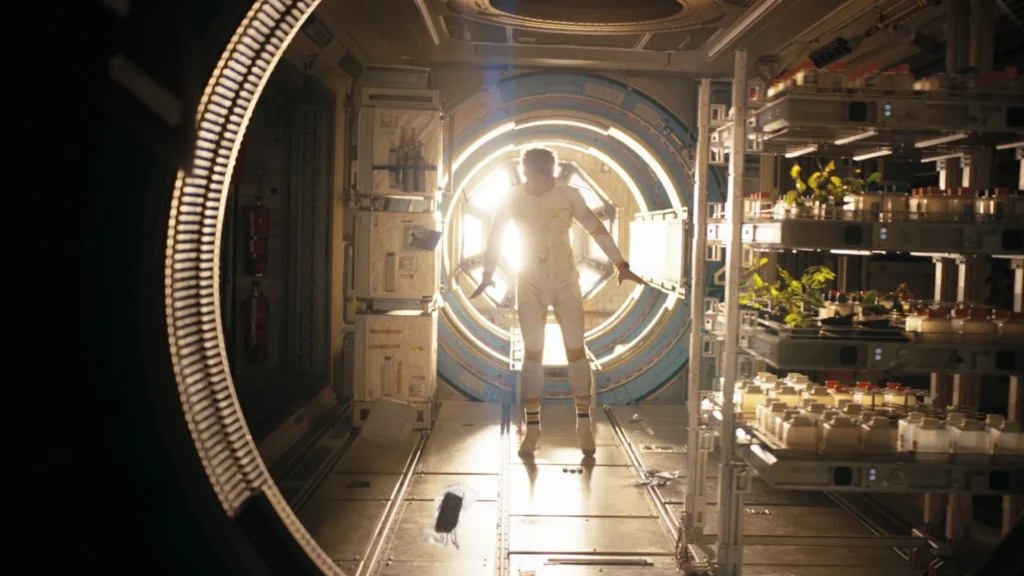
One reviewer put it perfectly:
“My own deficiencies had me skimming over the calculations, but this is still the most enjoyable hard SF I have read in years: funny, well plotted, and full of surprises. In addition to enjoying the cracking story, it was a pleasure to read about people relying on logic and science as the best way to solve problems.”
Another reason is that Andy Weir creates a symmetry between Ryland Grace(the main character), and us, the reader. He makes the character and the reader equals, and that creates a strong bond. He makes us feel, sure — I could do this if I were in his position. This sparks our curiosity even more to engage and move forward through the story.
But in order for this to work, the science has to make sense — so that we can follow along.
Credibility: The science makes sense
A good science fiction writer makes sure that the plot is logical from cover to cover.
Without that credibility, the plot would collapse under its own weight. A sci-fi book is like that friend we meet on the first day of a new school. We don’t really know what’s going on, but they would walk us through it and help us survive that first, intimidating day. In a well-written sci-fi story, we might not understand every piece of science, but the book makes sure we reach the end without mental fatigue. After each calculation, each scientific venture, we think: I may not have understood it fully, but I see the logic here.
Andy Weir lays out the facts so we can see them for ourselves.
We don’t need to grasp the science fully, but having been able to see all the credible facts, we can trust the science. Without trust, we wouldn’t enjoy a sci-fi story at all. For instance, take the movie, Moonfall (2022): on paper it has everything — space, disaster, big visuals — but the science is so absurd it breaks the movie. Neil deGrasse Tyson even called it “violating the most laws of physics per minute”. Audiences didn’t buy it, and the movie ended as a massive blow.
If the science collapses, so does the story.
Andy Weir, on the other hand, made a huge effort to get the facts right. He talked to scientists, did the research, and made sure it was accurate. In an interview about Project Hail Mary, he said there was more research for this book than for any of his previous ones.
There was more research for PHM than for either of my previous books. It was a ton of different sciences – physics, relativity, quantum mechanics, biology, chemistry, materials science, you name it. But I enjoy the research part of a project, so it was all fun for me.
He also mentions in a separate interview that he reached out to top experts, including Dr. Jim Green, NASA’s chief scientist, who advised him on planetary science, and Dr. Charles “Chuck” Duba, a Nobel Prize–winning particle physicist, helped him with neutrinos and subatomic physics.
That huge amount of research clearly paid off. He injects all this knowledge into the story in a simple, clear way — so the hard science becomes nothing more than solving an interesting problem.
A great example of this is how Ryland Grace learns an alien language.
I installed the software on one of the laptops. It’s pretty simple to use and has a plethora of features, but the one I’m most interested in is the Fourier transform. It’s the most basic tool in sound-wave analysis and arguably the most important. There’s a lot of complicated math on how to make it happen, but the result is this: if you run a sound wave through a Fourier transform, it will give you a list of the individual notes being played at the same time. So if I played a C-major chord and let this app listen to it, the app would tell me there’s a C, an E, and a G. It’s incredibly useful. (page 189)
The book doesn’t bore us with technical jargon — it only mentions what matters for the plot. We’re focused on the goal: understanding the alien language. Even if we don’t grasp the physics, we nod along because we know that this is the next best thing to do.
Looking at that small paragraph, two things are clear.
First, Andy Weir makes sure that we are a part of the story with his style of writing. Second, when the technicality of the technique is removed, it’s familiar to us in everyday life.
I remember last week visiting a friend and his family. When their toddler made a little noise, my friend glanced at him, not worried. Later, the toddler made a different, louder noise, and my friend immediately walked over saying, “time to change the diapers” — He just did a Fourier transform!
We read sounds like this every day.
The good news is that the principle behind it stays the same, no matter how technical it gets. Scientists use the same technique to study whale communication: they analyze whale sounds to identify species, then classify the calls — mating, social, alarm, navigation. The magnitude of the signal versus frequency allows them to distinguish patterns clearly.
The figure below shows whale sounds from different species. The y-axis represents the intensity of the sound, while the x-axis shows how high or low the sound is (its frequency). By looking at these patterns, scientists can distinguish between different types of whales and even other species.
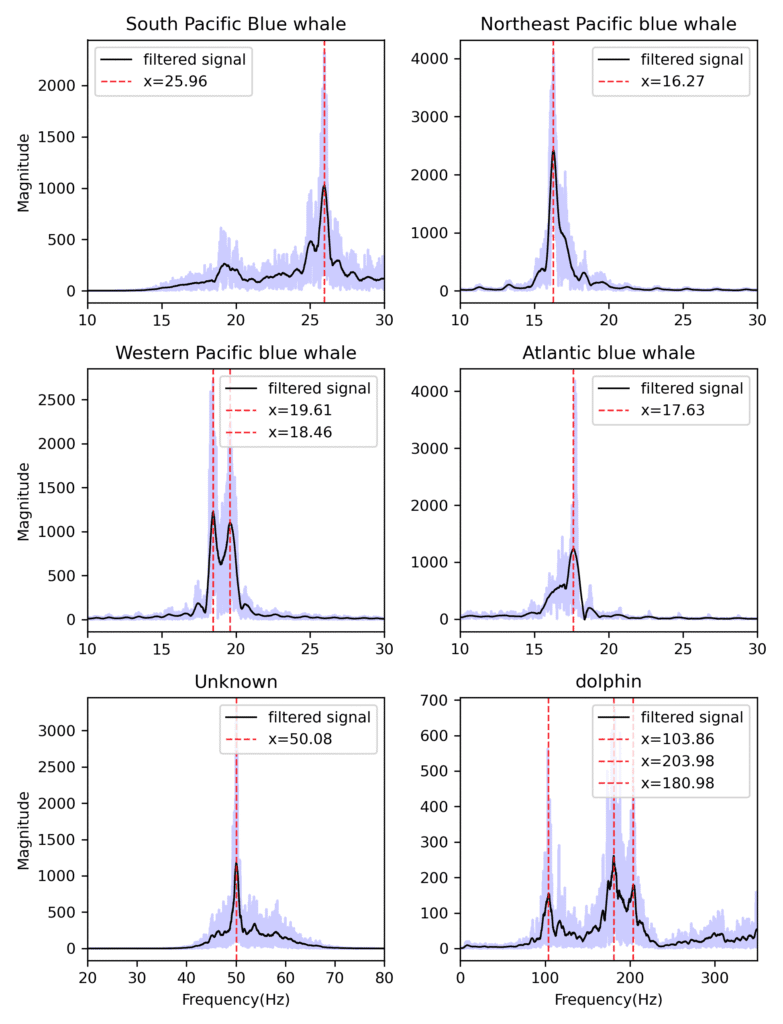
Hard science, in Project Hail Mary, isn’t a barrier — it’s what makes the story satisfying.
Knowing that the science makes sense, we nod along and move through the story with a smile.
Hope: If this story’s success was a car, hope was its premium gas
But we wouldn’t have that smile and that easiness reading Project Hail Mary just because the science is “credible.” Many readers admit they don’t want to slog through endless technical breakdowns, even if they were credible.
The remarkable thing about this book is that people keep reading anyway. Why?
Other than the two key ingredients the book has to offer—credible science and a story that sparks curiosity—there’s another, somewhat hidden ingredient that makes this book loved by all — and that is hope. The whole book runs on it.
First, there’s the hope tied to Ryland Grace’s mission. Would he survive? Would he succeed?
Then there’s a second type of hope, the kind that has made countless books and movies work for decades — and Andy Weir applies it masterfully in Project Hail Mary. He keeps us on the edge, asking: Will Ryland Grace become the person we want him to be?

Will he become a better person than he used to be at the beginning of the story?
Matthew Dicks, the author of Storyworthy, writes in his book:
All great stories — regardless of length or depth or tone — tell the story of a five-second moment in a person’s life. (page 79)
A “five-second moment” is a brief instant when something fundamentally changes in a character’s life or personality. A good example of this is the movie Jurassic Park. At first glance, the story seems to be about dinosaurs, but at its core, it’s about Alan Grant, the scientist. In the beginning, Grant isn’t fond of children — he even uses a fossilized claw to scare them.
By the end, he has changed. He develops a care for children, and the movie closes with the moment he lets the claw fall to the ground. We, as the audience, hope for that transformation, and when it happens, it satisfies us — it makes the story whole.
In Project Hail Mary, Andy Weir uses the same kind of narrative. Instead of dinosaurs, it’s space and fascinating science. But at its core, it’s about Ryland Grace, the science teacher. At first, he’s reluctant to take responsibility for his planet, driven mostly by circumstance and survival. He’s not a trained astronaut — he’s an unwilling hero.
By the end, though, he’s willing to risk his life not just for Earth, but for another alien species.
The “five-second moment” in Project Hail Mary isn’t attached to hard science or the interstellar mission. It’s the moment when Ryland Grace decides not to save himself, but to turn his ship away from Earth — choosing instead to save not only humanity but also another alien civilization. In those few seconds, Andy Weir fulfills our hope.
Ryland finally becomes the person that we wanted him to be — That’s the story.
This is why, regardless of age, everyone loves this book — there’s something in it for anyone.
As a huge fan of the book myself, I also hope that they don’t mess this movie up!

